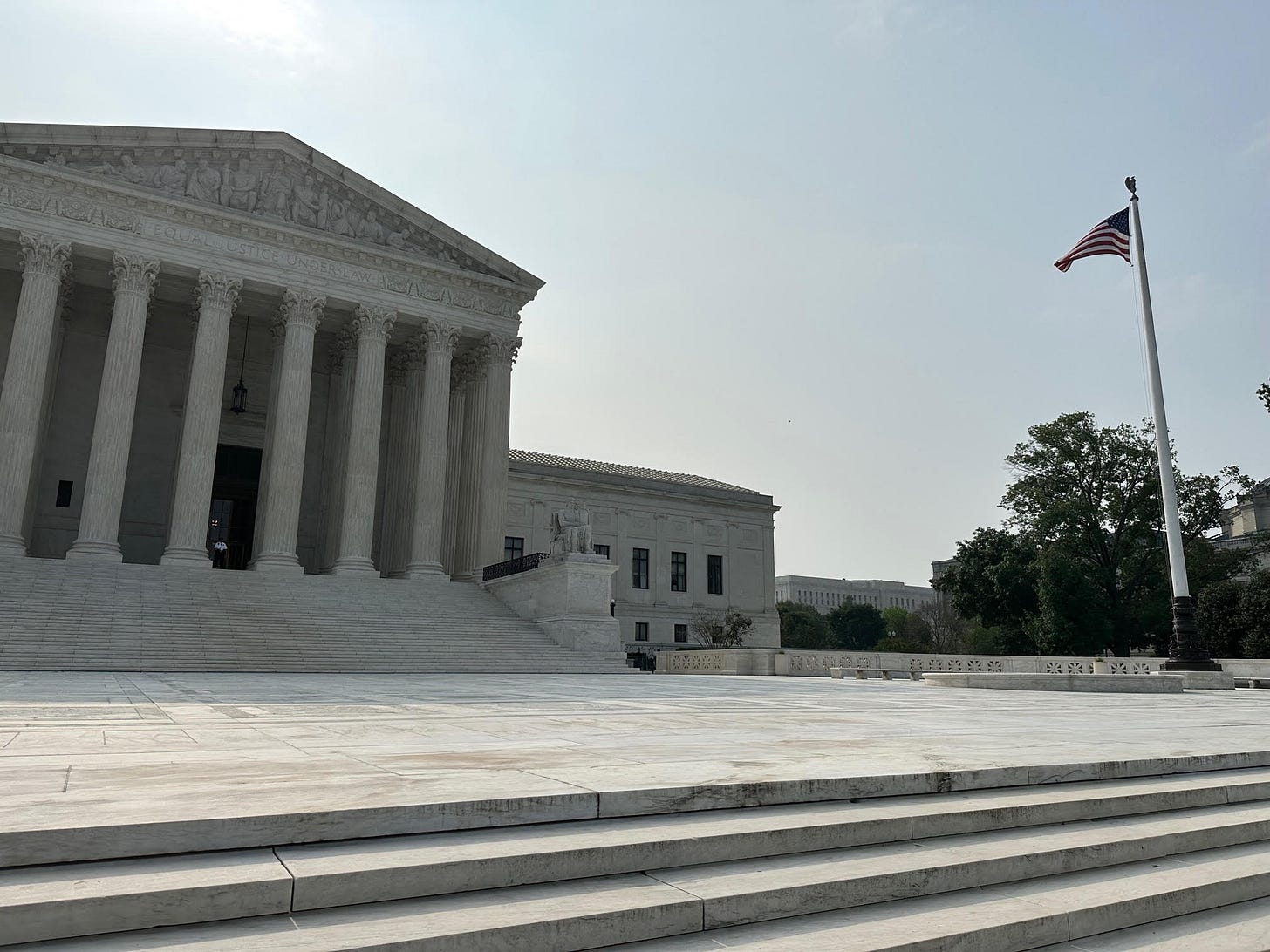A 6-3 Supreme Court means what it means
If they want it, they get it.
On Friday morning, Justice Neil Gorsuch held for the U.S. Supreme Court’s reactionary 6-3 majority that Lorie Smith’s 303 Creative business could not be forced, under Colorado’s public accommodations law, to make wedding websites for same-sex couples’ weddings if she had a business that did so for opposite-sex couples because such a requirement would compel her to speak in violation of the First Amendment.
Justice Sonia Sotomayor called the decision a “grave error” in her dissent for the Democratic appointees, a conclusion that led her to announce her dissent from the bench for a second day in a row.
I’ll have more on 303 Creative v. Elenis once I get a moment to breathe here and think about the implications of Friday’s decision. There’s a lot bouncing around in my head, but, bluntly, I’m running out of steam for the week.
Before we head into the weekend, though, I just wanted to take a minute, step back, and pull some threads together here.
In addition to the 303 Creative decision, the same 6-3 majority — led by Chief Justice John Roberts — also held that the Biden administration’s student loan forgiveness program was not allowed under the HEROES Act used by the administration to advance the debt relief program.
(Already Friday, President Biden announced the administration would be trying another route, seeking to provide relief under the Higher Education Act.)
Those final Friday decisions of the term, of course, followed Thursday’s decision ending affirmative action in higher education.
And so it went with this term.
The Voting Rights Act, “independent state legislature” scheme, and Indian Child Welfare Act cases all ended with decisions in which some of the most reactionary justices found themselves on the dissenting end. (Justice Clarence Thomas wrote dissents in all three cases.) At the same time, all three cases also featured at least some discussion of future angles for future cases — ways in which this term’s result could be challenged or diminished.
Then, there were the cases like the final three, where the partisan divide was on full display and the majority powered through with its ruling. Earlier, there was the Clean Water Act case — where the reactionary majority went too far even for Justice Brett Kavanaugh.
The right has the votes, and they will move in ideological cases as they want and when they want.
That doesn’t mean they’ll always vote in lockstep, and it doesn’t mean they’ll always support every radical theory cooked up in a Federalist Society or Alliance Defending Freedom lab.
But, they can.
That said, they also have the outside world to face. This term, the court and its justices have faced the backlash to Dobbs, ongoing ethics questions, and the larger attention on the court and its actions. They’ve also got a Republican Party beholden to ever-more-extreme forces who back almost all of the most extreme cases coming to the justices.
With those two worlds — the inside and outside ones — in mind, this term starts to come into a kind of focus.
It appears that the majority has, at least as a group, pursued an aggressive type of balance: Take some wins outright and loudly, take some quietly through “obscured extremism” (as I put it last night), and pull back on some cases (whether because of a genuine belief the arguments go too far or as a strategic matter) in order to keep the boat (and the public) from rocking too hard.
And, so long as they have the votes, there’s always next term.
A thank you
Finally for now: Thank you.
As I noted above, I’ll have more on 303 Creative, as well as some other post-decision follow-up in other cases, but Friday is the end of the Supreme Court’s decisions for this term and, with it, it’s the end of my first full term of arguments covered here at Law Dork.
I truly appreciate all of the support that friends, family, acquaintances and strangers have given to me over this first year. It’s still a regular challenge to figure out what exactly I’m doing here and how to do it better, but the support I have been given makes it a challenge that I look forward to (almost) every day. (I’m human!)
Thank you all for letting me work to figure things out here and for stepping in to provide thoughts when I’ve asked! I’m going to spend some time in July sketching out the year-two plan for Law Dork, and part of that will include seeking your input. I’ll likely have a survey of some sort, so, when it comes, please do fill it out to help me make Law Dork even better going forward!
With that, and as I say elsewhere, have a good weekend, all, and let us try to be good to one another — and ourselves.





Thank you, Chris!
Yes, thank you Chris. Have a nice weekend and safe 4th of
July.